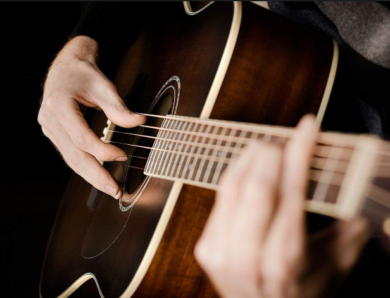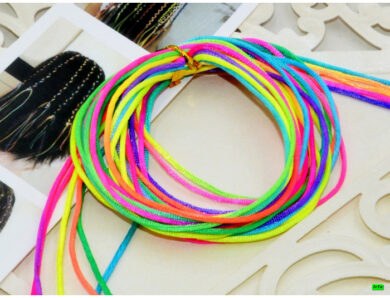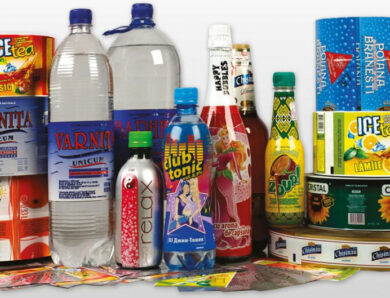Microwave utensils - which can be put, which is not possible?
Microwave is a convenient thing, undoubtedly. Now, definitely, no kitchen is complete without it. But, oddly enough, some are still unaware, which utensils can be used in the microwave, and which is not. And these people are very surprised, when you hear a loud explosion inside the camera…
How to test utensils for suitability for use in the microwave
If you have never used any utensils in the microwave, available at your home, then, we recommend that you check it beforehand. Because, utensils may look quite suitable, and in practice, will take and how flakes in the process of heating! Or even in your hands, when you start getting a hot plate of borscht, which is much less pleasant.
Take an ordinary faceted glass(or any cup, in which you previously warmed up the liquid and did not observe the adventure), fill it a third with water. And put it on a plate, which you want to check. Start normal warm-up mode, on 1 minute.
If, capacity is suitable, then at the end of the process you will find, that the liquid in the glass warmed up, and even boiled, but the plate under study remained completely cold. If it is hot, then it should not be used, it is not for the microwave, obviously.
But you can check that, already available. It will not be possible to do such a trick in the store. So, you need to know in advance, although, theoretically, what to look for when buying utensils for the microwave.
What materials can be used categorically
And now, let's go into more detail about that, which utensils cannot be placed in the microwave. Remember once and for all, that the most dangerous materials for microwaves are:
- Crystal
- Thin glass or melamine
- Clay and ceramics without glaze
These three materials burst ungodly, under the influence of microwaves. The crystal contains lead, and besides, has a heterogeneous structure. Clay too, if not protected by a dense glaze - inhomogeneous and full of internal bubbles, invisible from the outside. When heated, these cavities burst and you, opening the door, find a sad handful of shards.
But, let's repeat: good, if it happens inside, straight in the process, and not in your hands. So, these two materials themselves are inconsistent. AND, if, regarding the crystal and so it is clear, and there is nothing special to heat in it, then clay bowls and bowls of thin glass, often put in the microwave.
Other utensils, which is not suitable for microwave, the oven is impressive, not your hands. But, why tempt fate and disable technology? Materials, listed below, cause spark discharges, crack and clap inside the camera:
- Copper
- Brass
- Cast iron
- Steel
- Gold plating
- Metal coating
Of course, what about saucers, with a gold border you need to forget. But it's interesting, what are the pictures, which look, like ordinary paint, but in fact contain a lot of metal, which causes an electric discharge. So, it is necessary to take plates absolutely without drawing.
What materials are suitable for microwave ovens
In the first place in this list - glass heat-resistant dishes. She is not afraid of anything, the food in it is perfectly warmed up, she herself remains cold, and the furnace consumes much less electricity, than when using other materials.
But, a huge disadvantage of this dish - the high cost. It is three to four times more expensive than usual. And to buy it in sufficient quantities for the whole family - not everyone can afford.
Also, porcelain and earthenware are suitable for use, of course, without pictures. Ceramics are also suitable, if it is covered with a homogeneous layer of glaze. Still suitable plastic, polyethylene, paper utensils, silicone, parchment paper and even linen or cotton cloth(it can be used to heat bread, example).
Glass is quite suitable, but not subtle, and of such thickness, as in ordinary jars or faceted glasses.
We draw your attention to that, that use any utensils, on which the glaze is partially applied - not worth it. It heats the food unevenly and again, may burst.
More on plastic containers
Everything is simple with plastic: on the label of such containers, definitely worth marking, whether it is suitable for microwave, may be suitable for heating or not. But, it's in the store, Of course.
And what to do, if you have a sudochok, and there are no stickers on it for a long time? Then, you better not use these dishes, since, if it turns out, that this material is not intended for microwave, then he is, when heated, will emit a lot of harmful substances, which will fall directly into the food.
It is easier to go to the store and buy a new sudochok, in which you will be sure for sure. The main thing, don't take cheap, the one who arrived from Shanghai. These enterprising people will write you whatever you want and supply you with any markings, but in fact, material as it was, and will remain unsuitable for high temperatures. And not only that, that heating in the microwave itself is not very useful, and coupled with Chinese plastic, it will be just a huge blow to the liver.
Although, by and large, what a need to heat food in them? There are some of them completely unsympathetic.
About that, whether it is possible to cover plates at warming up
It is impossible to cover densely, rvone. You do not need to put any wraps and plates wrapped in film. Heating an open container is also not an option. Example, after heating buckwheat porridge with liver, microwave walls will have to drage long and tedious, since, these products themselves explode from within.
The best option - special covers, which are sold in home appliance stores. They are very large, the size of a rotating oven circle, and their height is also great. I put a plate under this flask - and no problems! Warms up, does not explode and does not stick to the walls.
Although, applying them you need to know: they do not withstand strong boiling of products. Then they shrink because of it, the resulting vacuum and tightly sucked to the glass circle. It will not be possible to remove them just like that, will need to be picked up with a knife from below, to give access to air.
Choose the optimal form for heating
Not just material, but the shape of the dishes is important for comfortable heating. The microwave heats up quickly and often, the liquid pours out. The best modification of plates or cups for microwaves with extended top. They have, for some reason, the fluid behaves calmly, even, if it boils strongly.
What should be the containers for cooking and baking in the microwave
Separately, I would like to talk about it, in what utensils you can cook in the microwave.
You can cook and stew only with refractory glassware. There is nothing better and can not be. But, at the same time it is necessary to consider, that microwave, as we wrote above, has the ability to bring the liquid out. So, choose a larger container, and not close. Food and water should reach 2/3 total volume.
Also applies to baking. Or choose a larger shape, or put the dough a little less, than in cases, when baking in a regular oven. The ideal material for this is silicone.
Now you know for sure, which utensils can be used in the microwave. We wish you all the best and as few surprises as possible with fireworks!




